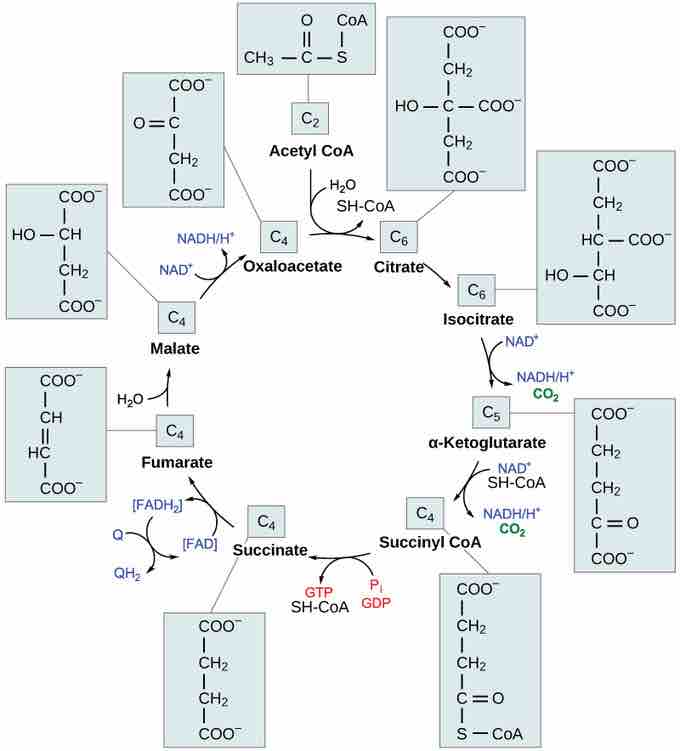Acetyl CoA to CO2
Acetyl CoA links glycolysis and pyruvate oxidation with the citric acid cycle. In the presence of oxygen, acetyl CoA delivers its acetyl group to a four-carbon molecule, oxaloacetate, to form citrate, a six-carbon molecule with three carboxyl groups. During this first step of the citric acid cycle, the CoA enzyme, which contains a sulfhydryl group (-SH), is recycled and becomes available to attach another acetyl group. The citrate will then harvest the remainder of the extractable energy from what began as a glucose molecule and continue through the citric acid cycle.
In the citric acid cycle, the two carbons that were originally the acetyl group of acetyl CoA are released as carbon dioxide, one of the major products of cellular respiration, through a series of enzymatic reactions . For each acetyl CoA that enters the citric acid cycle, two carbon dioxide molecules are released in reactions that are coupled with the production of NADH molecules from the reduction of NAD+ molecules.

Acetyl CoA and the Citric Acid Cycle
For each molecule of acetyl CoA that enters the citric acid cycle, two carbon dioxide molecules are released, removing the carbons from the acetyl group.
In addition to the citric acid cycle, named for the first intermediate formed, citric acid, or citrate, when acetate joins to the oxaloacetate, the cycle is also known by two other names. The TCA cycle is named for tricarboxylic acids (TCA) because citric acid (or citrate) and isocitrate, the first two intermediates that are formed, are tricarboxylic acids. Additionally, the cycle is known as the Krebs cycle, named after Hans Krebs, who first identified the steps in the pathway in the 1930s in pigeon flight muscle.